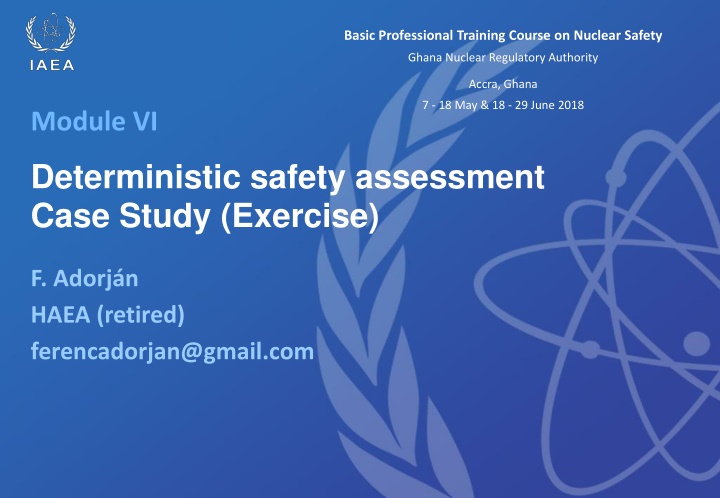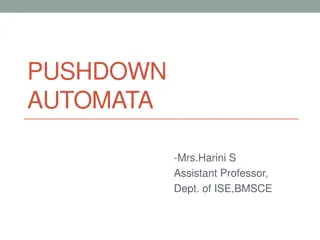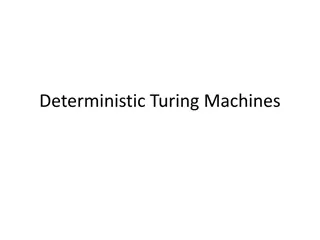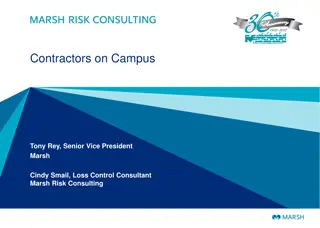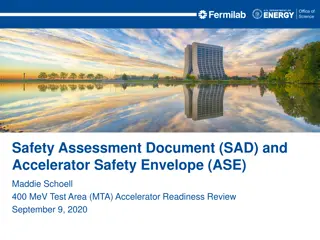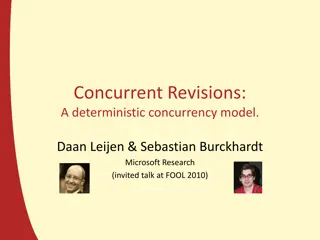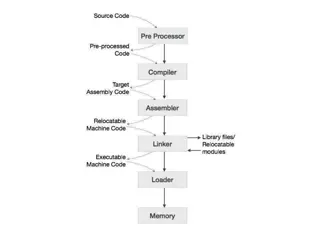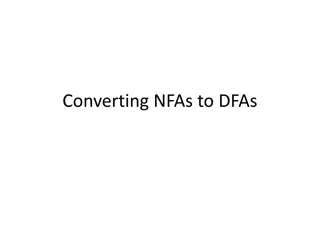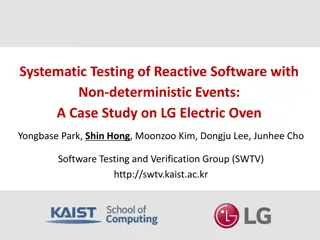Deterministic Safety Assessment: Selecting Postulated Initiating Events
In this training course on nuclear safety, the exercise focuses on selecting Postulated Initiating Events of LB LOCA type. Participants learn the methodology and significance of selecting these events and the arguments supporting their choices. Through case studies and analysis, safety analysts and regulatory reviewers deepen their understanding of deterministic safety assessment. Practical scenarios like large break cases and system variations are explored, emphasizing the importance of engineering judgment in identifying critical scenarios. The module provides valuable insights into safety assessment processes in nuclear facilities.
Download Presentation

Please find below an Image/Link to download the presentation.
The content on the website is provided AS IS for your information and personal use only. It may not be sold, licensed, or shared on other websites without obtaining consent from the author.If you encounter any issues during the download, it is possible that the publisher has removed the file from their server.
You are allowed to download the files provided on this website for personal or commercial use, subject to the condition that they are used lawfully. All files are the property of their respective owners.
The content on the website is provided AS IS for your information and personal use only. It may not be sold, licensed, or shared on other websites without obtaining consent from the author.
E N D
Presentation Transcript
Basic Professional Training Course on Nuclear Safety Ghana Nuclear Regulatory Authority Accra, Ghana 7 - 18 May & 18 - 29 June 2018 Module VI Deterministic safety assessment Case Study (Exercise) F. Adorj n HAEA (retired) ferencadorjan@gmail.com
Learning objectives To understand more deeply the significance and methodology of selecting the PIEs. The exercise models the role of the safety analyst, but it is also important to understand by the regulatory reviewers. The case is addressing the process of selecting the Postulated Initiating Events of LB LOCA type. The main task is to find solid arguments for supporting the selection. Module 6 - DSA Exercise 7 - 18 May & 18 - 29 June 2018 2
Case 1: Selection from the possible large break cases LB LOCA variations The position of the break (200 percent, guillotine): cold leg hot leg - syphon; close to the RPV, close to SG, relative to the ECCS junction, relative to the MCP, relative to the pressurizer, etc. Operational mode, initial status of the reactor: full power, low power, zero power, critical, sub-critical; if sub-critical, then nominal pressure/temperature, or cool down, heat-up phase; BOC, EOC, or some specific phase in the fuel cycle; Module 6 - DSA Exercise 7 - 18 May & 18 - 29 June 2018 3
200 percent guillotine break A four loop PWR primary circuit with some elements of the ECCS (hydro-accumulators) Module 6 - DSA Exercise 7 - 18 May & 18 - 29 June 2018 4
A typical PWR primary system The geometry is more accurate here. Note that this is a three loops reactor. The pressurizer is displayed here, bot no components of the ECCS are presented. Module 6 - DSA Exercise 7 - 18 May & 18 - 29 June 2018 5
Selection from large number of possible cases the PIEs to analyze The analysis of each cases requires a few man-months effort Use engineering judgement for selecting the worst cases. Hints: depending on the position of the break, some of the ECCS components become ineffective the hydraulic resistance may play some role at low power the negative feed-back mechanisms are weaker at EOC the residual heat is higher You have to find strong arguments to support your selection! The correct selection depends on the details of the design! Module 6 - DSA Exercise 7 - 18 May & 18 - 29 June 2018 6
A real example (from the Paks plant analyses) Peak cladding temperature 6 LB LOCA cases A1: full power, cold leg with no pressurizer on the loop A2: in cool down phase, the same cold leg, just after disconnecting the ECCS This is counter intuitive case! Module 6 - DSA Exercise 7 - 18 May & 18 - 29 June 2018 7
The task 1. Assumed configuration: a 3 loop plant; the pressurizer is connecting to loop 1; four-fold ECCS redundancy (2 are connected to the cold legs of loops 2 and 3, respectively and 2 are connected directly to the RPV) and 2 out of 4 ECCSs are sufficient; consider 3 sections of each loop (hot leg, cold leg, syphon); assume 3 different plant initial operating modes: full power, low power cool-down phase; all-together 27 possible cases + the actual ECCS configuration. 2. The goal is to select the 4 (or max 6) PIE cases to bound all the rest and elaborate strong arguments to support your selection. Module 6 - DSA Exercise 7 - 18 May & 18 - 29 June 2018 8
Summary Were the objectives reached? Could we find solid arguments to support our selection? Why could it be useful for regulatory reviewers also? Was the exercise useful at all? Module 6 - DSA Exercise 7 - 18 May & 18 - 29 June 2018 9
Basic Professional Training Course on Nuclear Safety Ghana Nuclear Regulatory Authority Accra, Ghana 7 - 18 May & 18 - 29 June 2018 Thank you for your co-operation!
